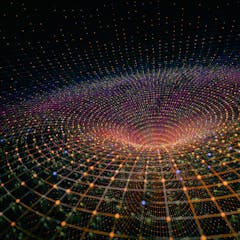
Articles on Astrophysics
Displaying 61 - 80 of 218 articles

Hypervelocity stars were discovered only 15 years ago and are the closest things in existence to real shooting stars. They travel at millions of miles per hour, so fast that they can escape from galaxies.

Astronomers watched a pair of pulsars for 16 years to test the theory of general relativity, which has stood unchallenged for over a century.

Advanced technologies and the information they collect have revealed how black holes form and behave.

We have to look back to the Big Bang to find out.

Saturn, Jupiter, Neptune and Uranus all have rings.

It can get very cold in space.

Such a mission could be developed soon, allowing astrophysicists to take selfies of the solar system and use the Sun’s gravity as a lens to peer deep into space.

In 5 billion years the Sun will collapse. A new discovery suggest some planets may still survive afterwards.

The largest orbital telescope ever made will allow astronomers to study the atmospheres of alien planets, learn about how stars form in the Milky Way and peer into the farthest reaches of the universe.

By studying the chemical makeup of binary stars, astronomers found many planetary systems are far less peaceful than ours.

The universe has a finite age — 13.8 billion years to be exact. So if it had a beginning, why is it so difficult to say for sure whether it will have an end?

Astronomers know a lot about what’s in outer space – and think it’s possible it never ends.

Fast radio bursts are the focus of a young and fascinating field of astronomy. Researchers just released data on more than 500 new bursts, quadrupling the total number of detected events.

A galaxy 320 million light-years away has a surprisingly similar structure to the Milky Way, suggesting our galaxy isn’t as unique as it once seemed to astronomers.

Astronomers just measured the largest flare ever from Proxima Centauri, humanity’s closest neighboring star. These flares could be bad news for life trying to develop on a planet orbiting the star.

Plus new research finds a way to speed up the search for dark matter. Listen to episode 4 of The Conversation Weekly.

A small add-on to existing gravitational wave detectors could reveal what happens to matter as it becomes a black hole, a process like the big bang in reverse.

The Arecibo radio telescope has collapsed but its amazing discoveries will live on.

Not all planets orbit stars. Rogues float through the galaxy in darkness and are almost impossible to see.

The 2020 Prime Minister’s Prizes for Science have recognised momentous achievements in astrophysics, sustainability innovation, epigenetics and primary and secondary teaching excellence.
